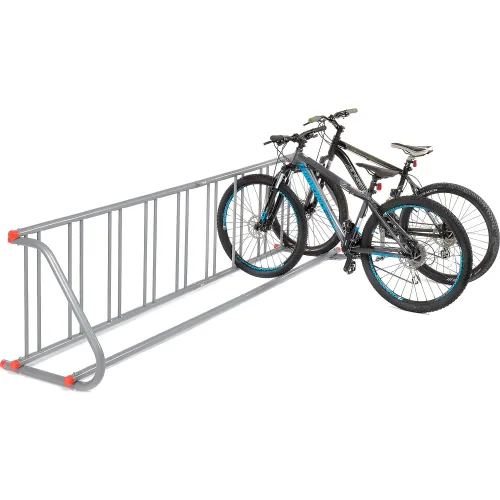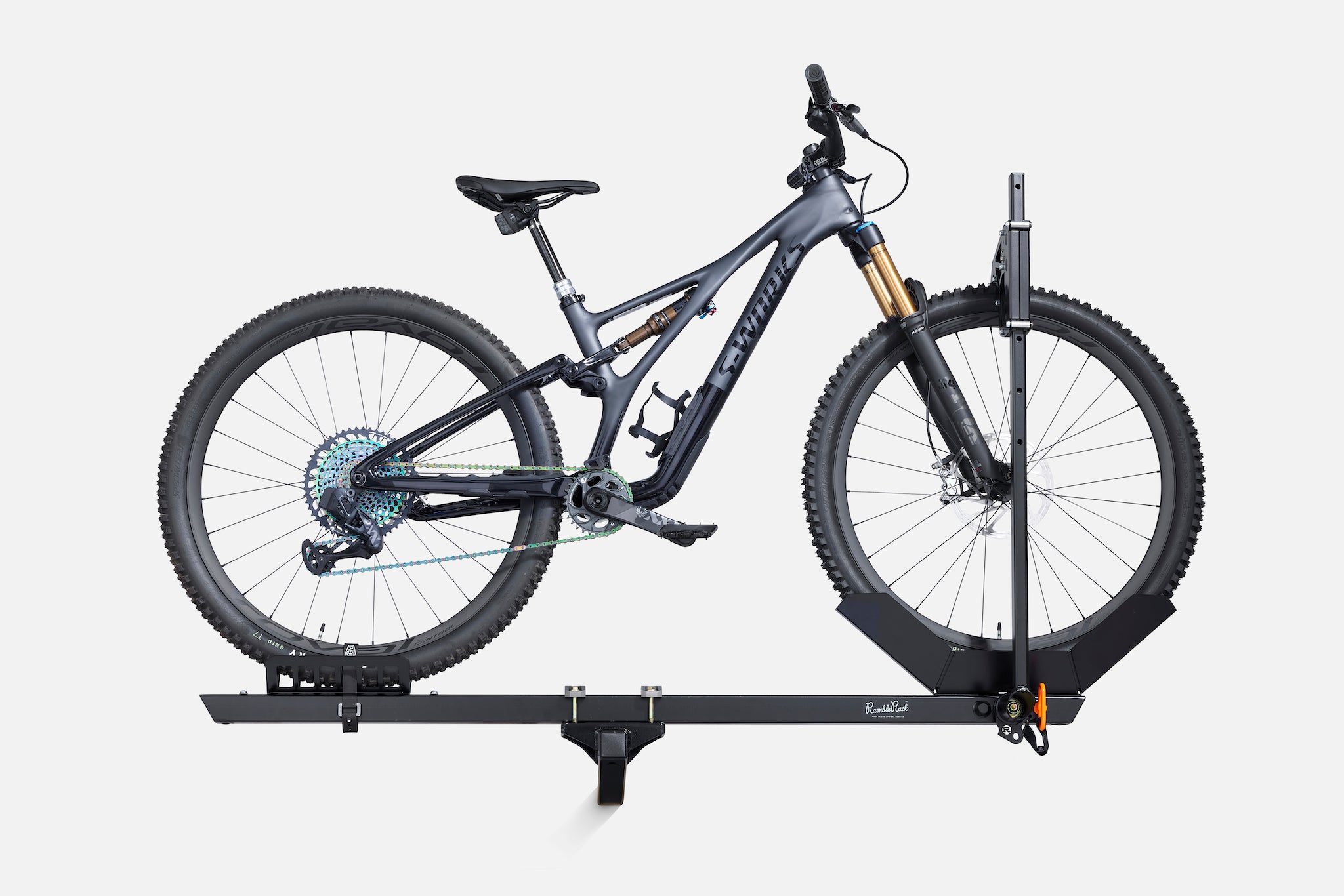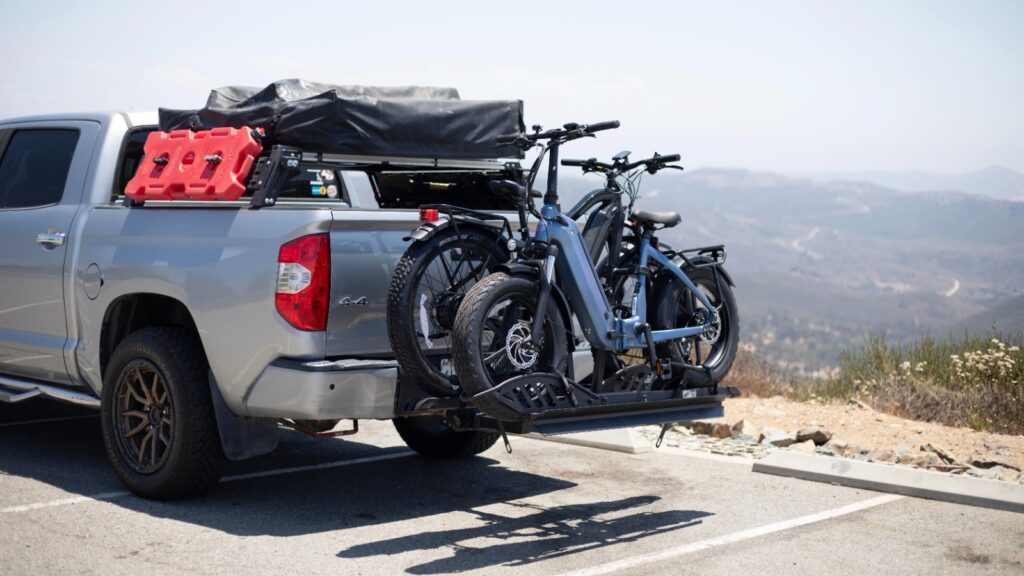Bike Rack Mounting Advice Every New Cyclist Should Know
Wiki Article
Discover the Different Types of Bike Shelf and Their Practical Applications for Cycling Enthusiasts
The variety of bike Racks offered today satisfies the diverse requirements of biking enthusiasts. From freestanding to wall-mounted alternatives, each layout uses one-of-a-kind advantages for storage and transportation. Portable Racks likewise offer adaptability for those on the relocation. Nonetheless, choosing the perfect type requires careful factor to consider of details needs. Understanding these aspects can make a substantial distinction in both convenience and security for bikers. What are the crucial considerations when choosing a bike rack?Recognizing Bike Rack Types
Different kinds of bike Racks cater to the diverse requirements of bikers. Among one of the most usual are freestanding racks, often found in metropolitan locations, which permit numerous bikes to be secured in a compact room. Wall-mounted Racks offer those with minimal floor space, supplying a reliable option for home storage. Furthermore, mobile bike racks, designed for convenience of transportation, charm to cyclists that often take a trip.
Hitch-Mounted Bike Racks
Hitch-mounted bike Racks supply a practical solution for moving bicycles, yet comprehending their setup process is crucial for effective usage. Customers have to additionally consider the weight capability of these Racks to assure safety and security and stability while traveling. In addition, compatibility with various automobile types plays a significant duty in identifying the appropriate rack for individual requirements.Installment Refine Overview
When picking a hitch-mounted bike rack, comprehending the installation process is vital for guaranteeing safety and security and convenience. The user must confirm compatibility between the shelf and the lorry's drawback receiver. The majority of Racks are made for either 1.25-inch or 2-inch receivers. After choosing the ideal rack, the installation starts with protecting the shelf right into the hitch receiver and tightening the hitch pin or bolt to protect against motion. Correct alignment is important to identify the shelf does not block tail lights or certificate plates. When installed, it is a good idea to look for stability by using slight stress to the shelf. Complying with the manufacturer's guidelines will certainly guarantee an effective setup, promoting a safe cycling experience when driving.Weight Capacity Considerations

Compatibility With Vehicle Kind
Selecting the right bike shelf involves confirming compatibility with different vehicle kinds. Hitch-mounted bike Racks are made to attach to the rear drawback receiver of an automobile, making them suitable for a variety of vehicles, SUVs, and trucks. However, it is vital to check the drawback class and weight capability to verify an appropriate fit. Many hitch-mounted Racks are compatible with 1.25-inch and 2-inch receivers, accommodating vehicles equipped with ideal towing capabilities. In addition, customers must consider their car's elevation and design, as some Racks might block rear access or call for extra clearance. Eventually, comprehending vehicle requirements validates that biking lovers can firmly transfer their bikes without compromising security or functionality.Trunk-Mounted Bike Racks
Trunk-mounted bike Racks provide a practical solution for bicyclists seeking an efficient means to transfer their bikes. Comprehending the installation procedure is crucial for ideal use, as inappropriate configuration can lead to safety and security worries. Additionally, considering the weight capability of these Racks guarantees that they can safely hold the bikes without risk of damage or failing during transit.Installation Process Summary
Many biking enthusiasts appreciate the ease of trunk-mounted bike Racks for their simplicity of use and flexibility. The installment process typically begins with unboxing the rack and acquainting oneself with its parts. The majority of Racks feature adjustable straps and hooks designed to safeguard them to the car's trunk or hatch. Customers should confirm the rack is located appropriately, aligning it with the car's shapes for security. Following the maker's guidelines, the straps are then tightened firmly, ensuring a snug fit. It is necessary to inspect that the rack does not block the automobile's lights or certificate plate. Verifying that all links are safe and secure prior to filling bikes is vital for safe transportation. Appropriate installment boosts both safety and efficiency during biking journeys.Weight Capability Considerations
When considering a bike rack for moving bicycles, weight capability is a crucial variable that can not be forgotten. Trunk-mounted bike Racks normally have weight limits that differ depending upon the model and layout. It is essential for users to inspect these specs to ensure they do not exceed the suggested weight, as doing so can jeopardize both safety and car stability. The majority of trunk-mounted Racks can sustain one or two bikes, with a mixed weight ability ranging from 70 to 120 pounds. Cyclists must likewise consider the weight of their bicycles, particularly if they have larger designs like electric bikes. Appropriately matching the shelf's weight capacity with the bikes' weights guarantees a secure and risk-free transport experience.Roof-Mounted Bike Racks
Roof-mounted bike Racks use a structured service for moving bikes, offering bikers with the advantage of making the most of cargo area. These Racks are made to hold bikes firmly atop the automobile, permitting very easy access to the rear of the automobile and stopping blockages to the certificate plate or tail lights. They are ideal for individuals who often travel with their bikes, as they can fit numerous bike designs and sizes.Installation normally includes attaching the rack to the vehicle's bars, making sure a steady and risk-free fit. Roof-mounted Racks are usually wind resistant and light-weight, which can result in boosted gas effectiveness contrasted to other sorts of shelfs. Users ought to take into consideration the elevation of their vehicle when packing and dumping bikes, as well as prospective challenges when entering garages or low-clearance locations - Hitch Bike Rack. Generally, roof-mounted bike Racks use a effective and functional option for avid bicyclists on the move
Wall-Mounted Bike Racks
Wall-mounted bike Racks provide an effective remedy for cyclists looking for to take full advantage of restricted room while firmly storing their bicycles. These Racks are optimal for metropolitan dwellers or those with tiny garages, as they boost bikes off the ground and make use of upright room. Made from strong products, wall-mounted choices can fit numerous bike kinds, including hill, hybrid, and roadway bikes.Setup is simple, allowing individuals to install them in garages, cellars, or perhaps outdoor areas. Lots of layouts permit one or numerous bikes, making them functional for individual or household use. Additionally, some wall-mounted Racks featured incorporated locks or safety functions to discourage theft, enhancing assurance for cyclists.
Portable Bike Racks
Mobile bike Racks provide bikers a versatile and convenient remedy for transporting their bikes. These Racks are created for simple setup and removal, making them ideal for those that require to often switch over between areas or cars. Portable and usually light-weight, portable bike Racks can be quickly saved in a trunk or garage, alleviating the burden of irreversible installations.There are numerous kinds of portable bike shelfs, including hitch-mounted, trunk-mounted, and roof-mounted options, each dealing with various vehicle kinds and cyclist preferences. Hitch-mounted Racks supply security and accessibility, while trunk-mounted Racks are typically much more versatile and affordable. Roof-mounted Racks are terrific for optimizing cargo room however may require some training.
Choosing the Right Bike Rack for Your Demands
Exactly how can one determine the most effective bike rack to suit their particular biking requirements? Determining the appropriate bike rack entails reviewing a number of aspects. One have to think about the type of car made use of for transport, as Racks E Bike Rack are designed for different placing systems, such as roof, trunk, or drawback. Next, the number of bikes to be carried is crucial; some Racks accommodate just one, while others can hold numerous bikes successfully. Additionally, determining the weight and frame design of the bikes is considerable, as particular Racks are better matched for much heavier or distinctively shaped bikes. Designated use ought to be taken right into account; frequent travelers may choose a much more portable alternative, while periodic users might prioritize simplicity and convenience of installment. By thoroughly evaluating these considerations, people can select a bike shelf that meets their needs and improves their biking experience.
Frequently Asked Questions
Can Bike Racks Accommodate Different Bike Sizes and Styles?
Bike Racks vary in style, making it possible for holiday accommodation for various bike dimensions and styles. Some Racks feature adjustable parts, while others are especially customized for specific bicycles, making certain safe storage and very easy accessibility no matter of the bike's specs.How Do I Appropriately Protect My Bike on a Shelf?
To correctly protect a bike on a rack, one ought to assure the framework and wheels are snugly secured making use of locks or bands, looking for security and stopping activity during transportation to stay clear of damage.Are Bike Racks Easy to Get Rid Of and set up?
Bike Racks vary in installation intricacy, however several are designed for user-friendliness. Detachable models normally offer uncomplicated configuration and elimination, while long-term installations might need tools and more time, relying on the details style.
What Products Are Bike Racks Normally Made From?
Bike Racks are usually made from materials such as steel, plastic, and light weight aluminum. Hitch Bike Rack. Steel gives longevity and toughness, while light weight aluminum offers light-weight transportability. Plastic alternatives are usually designed for simplicity of use and costDo Bike Racks Affect Gas Efficiency When Driving?
When driving is considerable, the concern of whether bike Racks impact gas effectiveness. Researches suggest that bike Racks can increase wind resistant drag, possibly causing reduced fuel effectiveness, specifically at greater rates or with added weight.After selecting the ideal rack, the setup starts with safeguarding the shelf right into the drawback receiver and tightening up the drawback pin or screw to avoid motion. Roof-mounted Racks are frequently aerodynamic and light-weight, which can lead to boosted fuel efficiency contrasted to other types of racks. Hitch-mounted Racks give security and ease of access, while trunk-mounted Racks are typically extra economical and versatile. Next off, the number of bikes to be carried is necessary; some Racks fit only one, while others can hold numerous bikes efficiently. Bike Racks differ in layout, allowing holiday accommodation for various bike dimensions and styles.
Report this wiki page